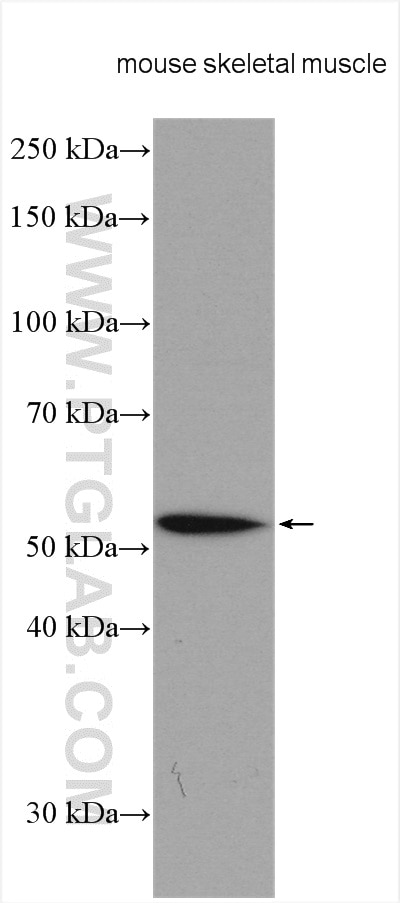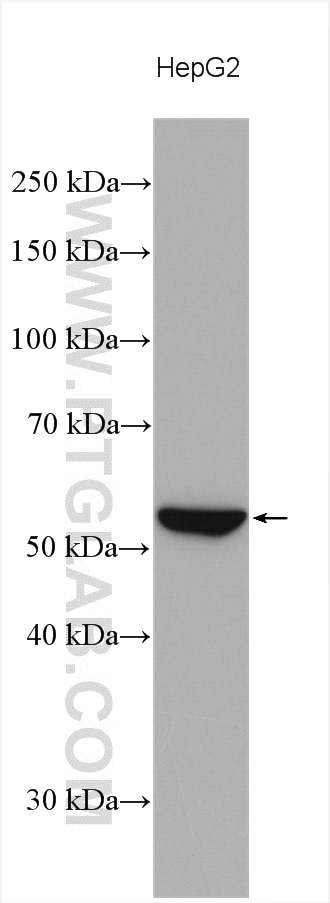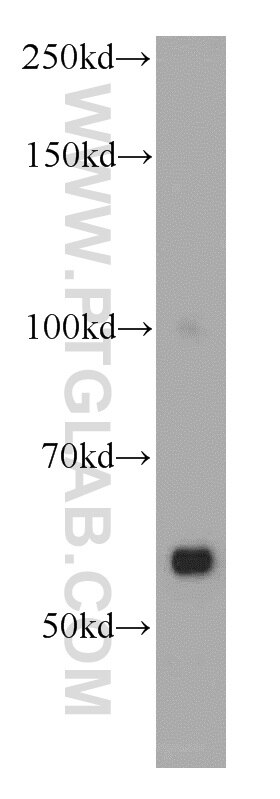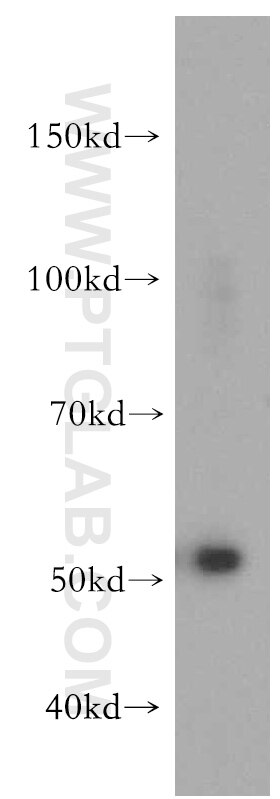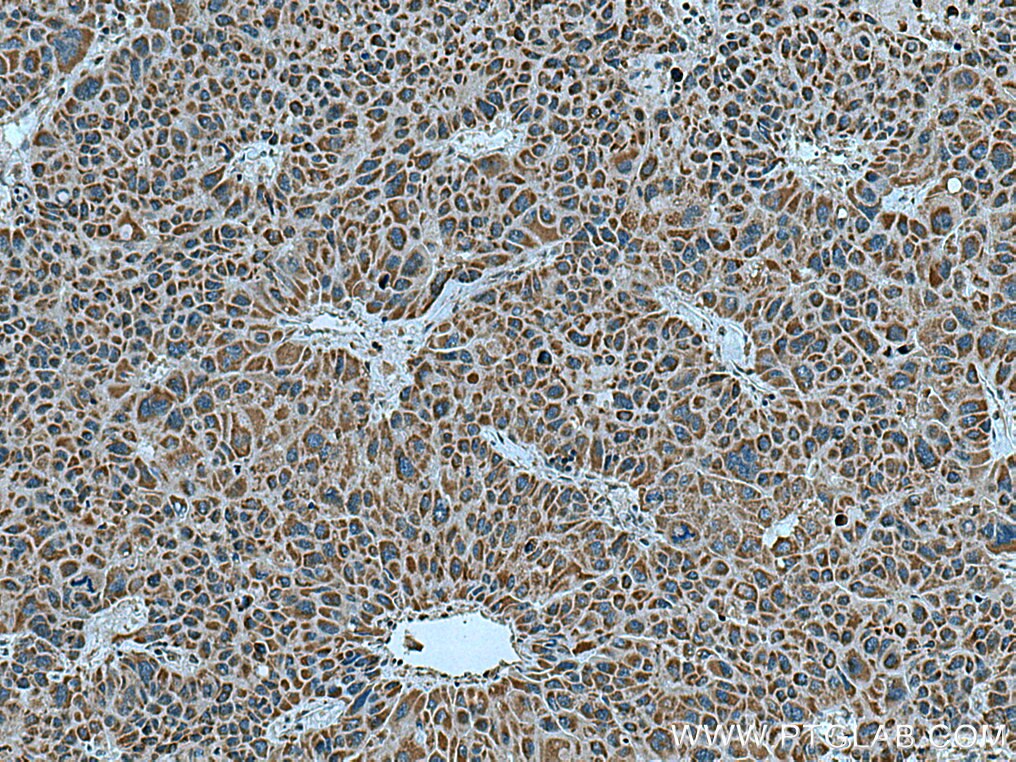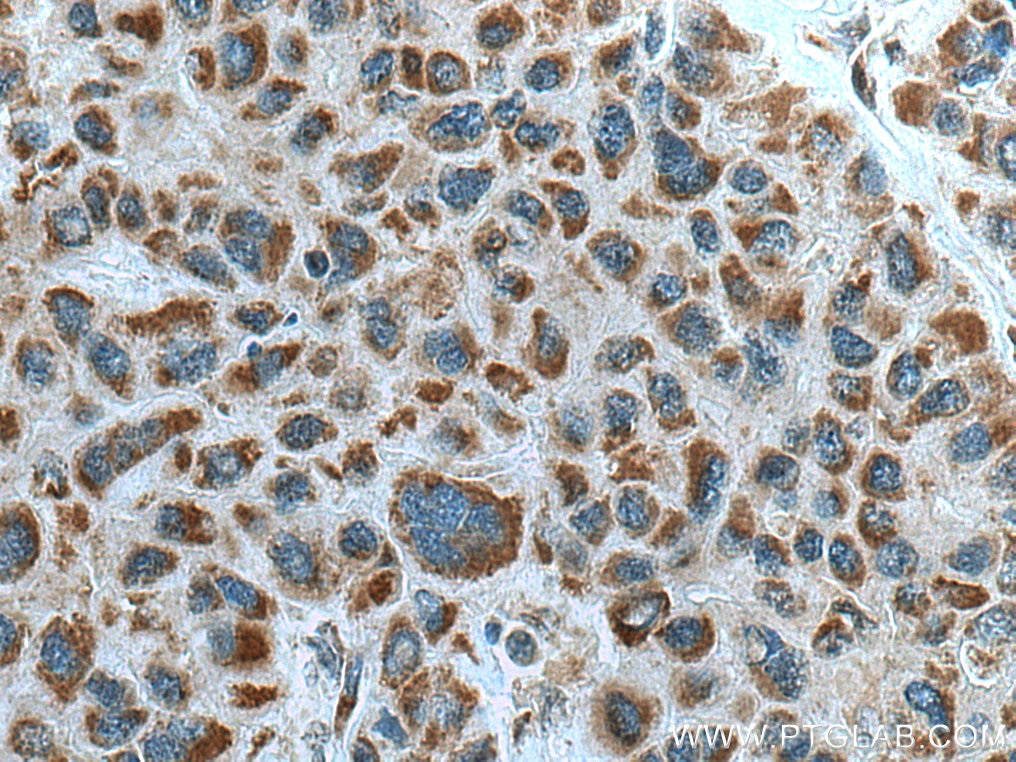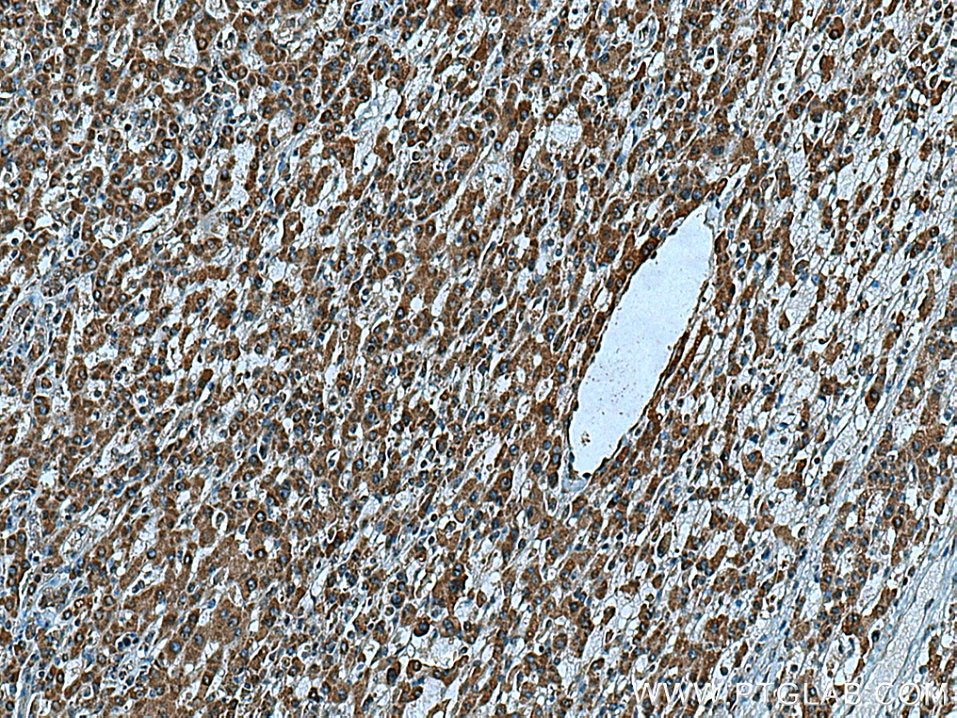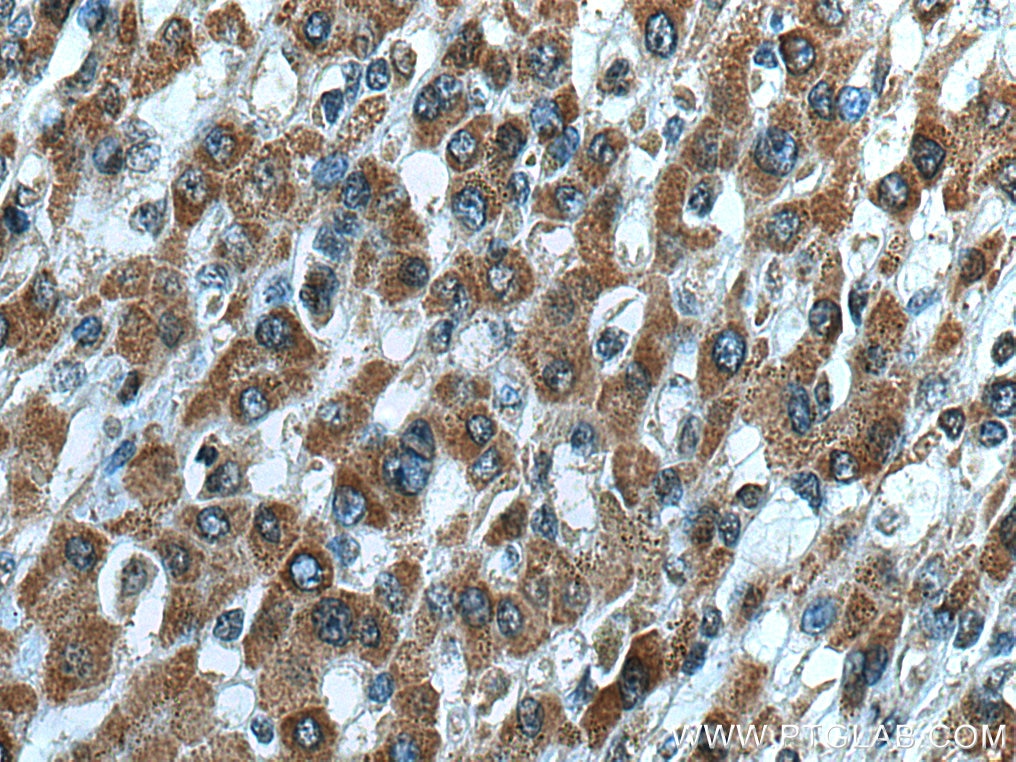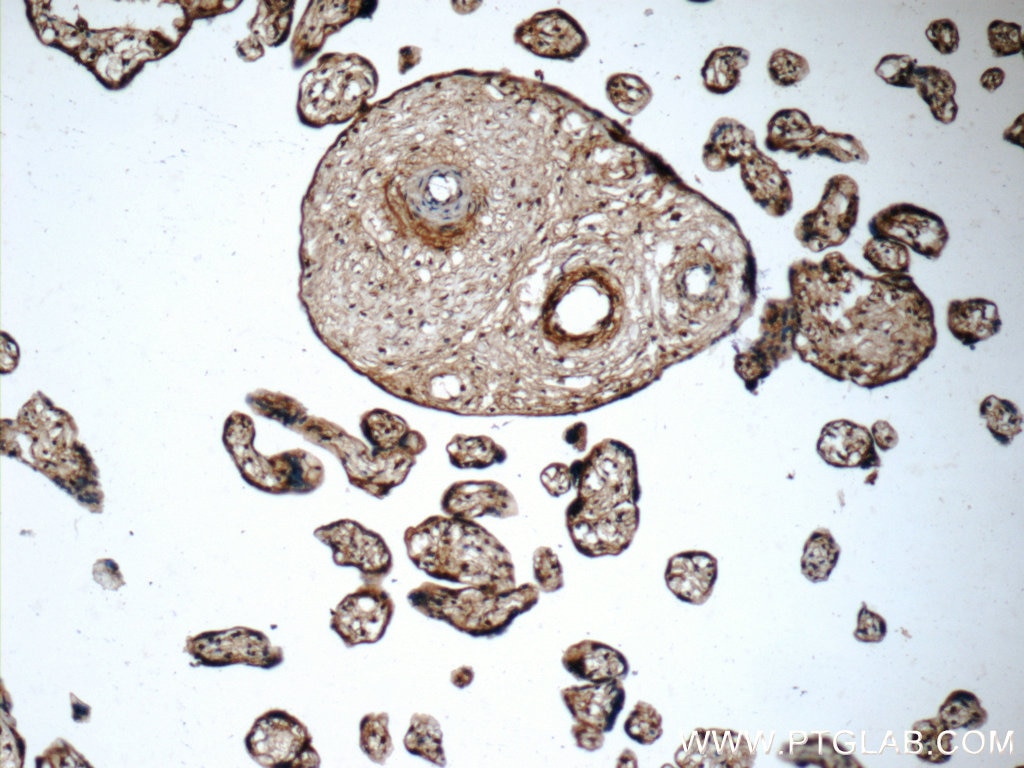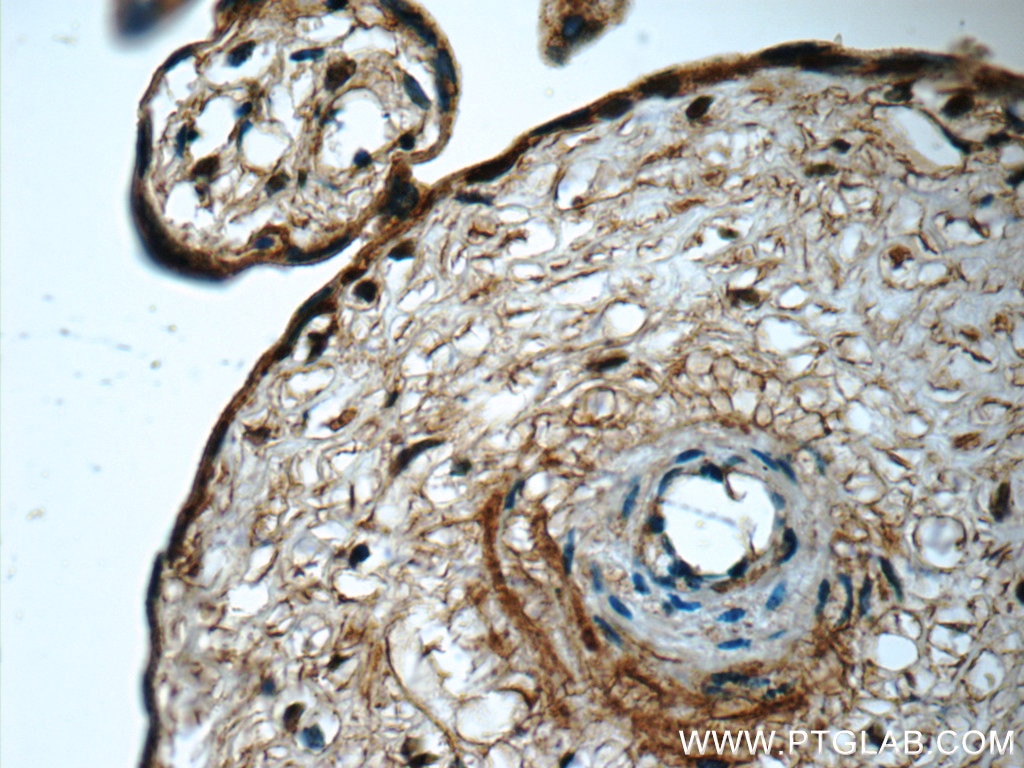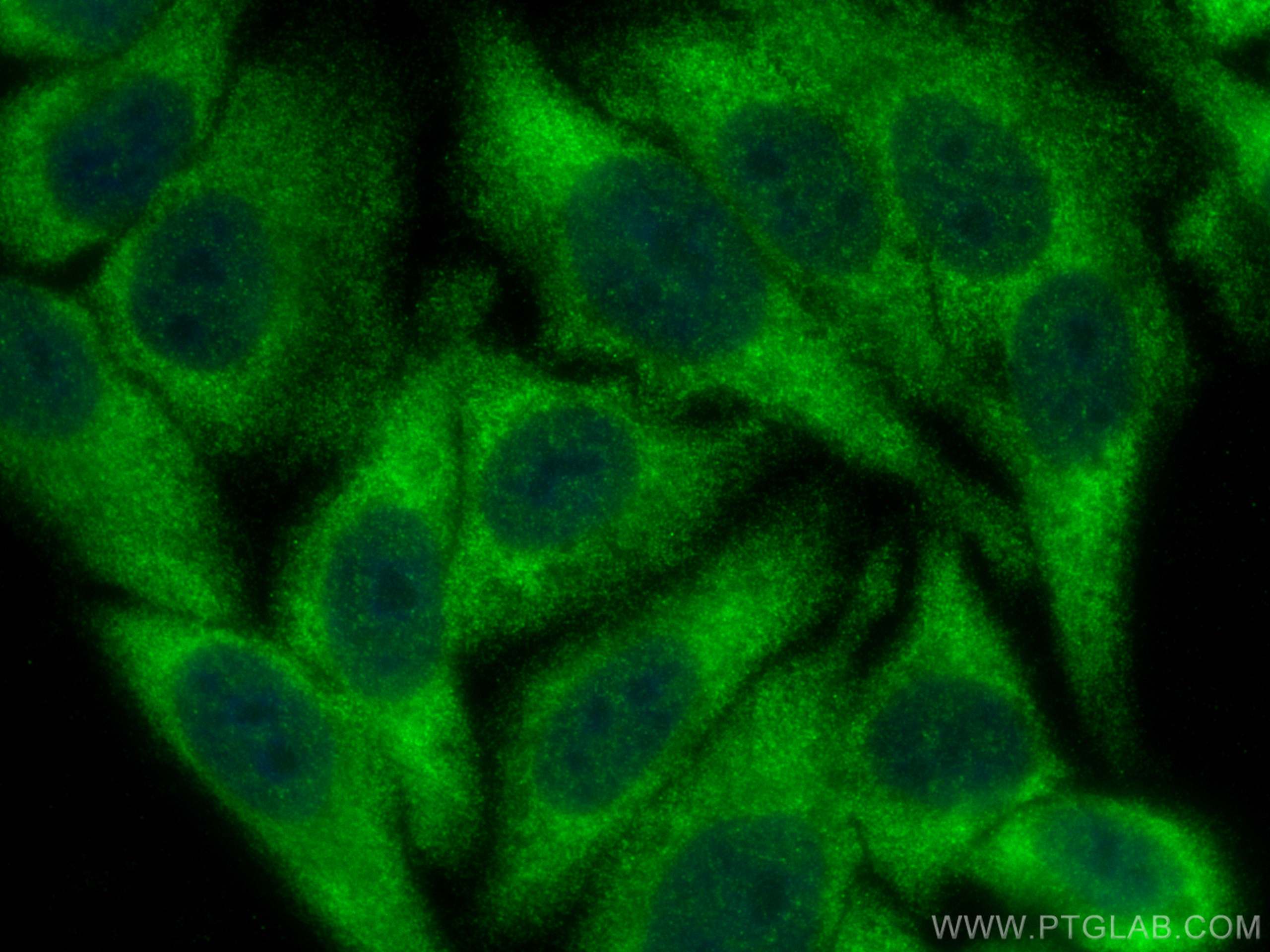- Phare
- Validé par KD/KO
Anticorps Polyclonal de lapin anti-ZAK
ZAK Polyclonal Antibody for WB, IF, IHC, ELISA
Hôte / Isotype
Lapin / IgG
Réactivité testée
Humain, rat, souris
Applications
WB, IF, IHC, ELISA
Conjugaison
Non conjugué
N° de cat : 14945-1-AP
Synonymes
Galerie de données de validation
Applications testées
| Résultats positifs en WB | tissu de muscle squelettique de souris, cellules HepG2, tissu cardiaque humain, tissu de muscle squelettique humain |
| Résultats positifs en IHC | tissu de cancer du foie humain, tissu placentaire humain il est suggéré de démasquer l'antigène avec un tampon de TE buffer pH 9.0; (*) À défaut, 'le démasquage de l'antigène peut être 'effectué avec un tampon citrate pH 6,0. |
| Résultats positifs en IF/ICC | cellules HepG2, |
Dilution recommandée
| Application | Dilution |
|---|---|
| Western Blot (WB) | WB : 1:500-1:1500 |
| Immunohistochimie (IHC) | IHC : 1:50-1:500 |
| Immunofluorescence (IF)/ICC | IF/ICC : 1:200-1:800 |
| It is recommended that this reagent should be titrated in each testing system to obtain optimal results. | |
| Sample-dependent, check data in validation data gallery | |
Applications publiées
| KD/KO | See 1 publications below |
| WB | See 6 publications below |
Informations sur le produit
14945-1-AP cible ZAK dans les applications de WB, IF, IHC, ELISA et montre une réactivité avec des échantillons Humain, rat, souris
| Réactivité | Humain, rat, souris |
| Réactivité citée | Humain, souris |
| Hôte / Isotype | Lapin / IgG |
| Clonalité | Polyclonal |
| Type | Anticorps |
| Immunogène | ZAK Protéine recombinante Ag6747 |
| Nom complet | sterile alpha motif and leucine zipper containing kinase AZK |
| Masse moléculaire calculée | 91 kDa |
| Poids moléculaire observé | 52 kDa |
| Numéro d’acquisition GenBank | BC001401 |
| Symbole du gène | ZAK |
| Identification du gène (NCBI) | 51776 |
| Conjugaison | Non conjugué |
| Forme | Liquide |
| Méthode de purification | Purification par affinité contre l'antigène |
| Tampon de stockage | PBS avec azoture de sodium à 0,02 % et glycérol à 50 % pH 7,3 |
| Conditions de stockage | Stocker à -20°C. Stable pendant un an après l'expédition. L'aliquotage n'est pas nécessaire pour le stockage à -20oC Les 20ul contiennent 0,1% de BSA. |
Informations générales
ZAK(sterile-alpha motif and leucine zipper containing kinase AZK) is also named as MLTK, MAPKKK, mlklak, MLK7, AZK, MLT, MRK, HCCS-4 and belongs to the MAPKKK family. It is a mitogen-activated protein kinase kinase kinase (MAP3K) that activates the stress-activated protein kinase/c-jun N-terminal kinase pathway and activates NF-kappaB. ZAK contributes to regulation of DNA damage checkpoints through a p38gamma-independent pathway. This protein has 3 isoforms produced by alternative splicing with the MW of 91 kDa, 51 kDa and 35 kDa.
Protocole
| Product Specific Protocols | |
|---|---|
| WB protocol for ZAK antibody 14945-1-AP | Download protocol |
| IHC protocol for ZAK antibody 14945-1-AP | Download protocol |
| IF protocol for ZAK antibody 14945-1-AP | Download protocol |
| Standard Protocols | |
|---|---|
| Click here to view our Standard Protocols |
Publications
| Species | Application | Title |
|---|---|---|
Immunity Cytoplasmic DNA sensing by KU complex in aged CD4+ T cell potentiates T cell activation and aging-related autoimmune inflammation.
| ||
Nat Commun Ribosome impairment regulates intestinal stem cell identity via ZAKɑ activation | ||
Cell Metab Ribosome stalling is a signal for metabolic regulation by the ribotoxic stress response | ||
Cell Death Dis Nitric oxide-induced ribosome collision activates ribosomal surveillance mechanisms | ||
Cell Rep Initiation of a ZAKα-dependent ribotoxic stress response by the innate immunity endoribonuclease RNase L |
Avis
The reviews below have been submitted by verified Proteintech customers who received an incentive forproviding their feedback.
FH Amy (Verified Customer) (08-14-2019) | Worked well with 5% milk in 0.2% PBST.Shows up well the beta isoform in mouse muscle, and alpha in heart.Did not work in Zebrafish despite the kinase domain being highly conserved between organisms.
|
